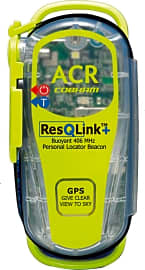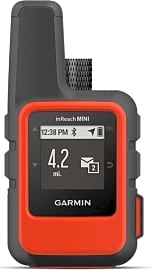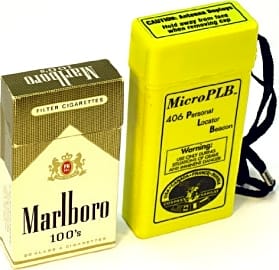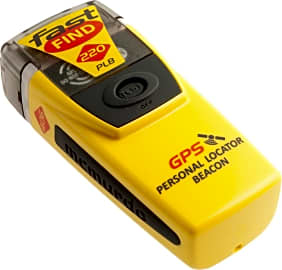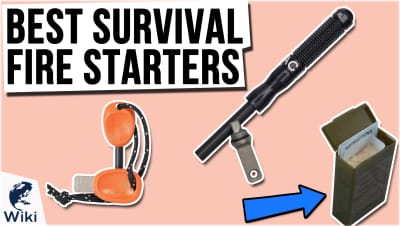The 7 Best Locator Beacons

This wiki has been updated 45 times since it was first published in April of 2015. Whatever kind of adventure you're planning next, make sure you take advantage of the latest in emergency technology to stay safe. These personal locator beacons, or PLBs for short, are small enough to not add to your burden, yet will get you the help you need quickly and reliably whether you are up a mountain, deep in the forest, or out to sea. Some can even be used for two-way messaging. When users buy our independently chosen editorial recommendations, we may earn commissions to help fund the Wiki.
Editor's Notes
January 15, 2019:
Locator beacons can be a vital, life-saving item in an emergency, so they must function reliably and have a battery that lasts long enough to carry you until the end of your adventure. Because of this, we only included tried and proven models on our list. Any unit that has been know to fail or have a lackluster rescue response was automatically discounted.
What Personal Locator Beacons Do
The secondary beacon makes the rescuing stage of a search and rescue much easier.
The majority of personal locator beacons, often referred to as PLBs, have three main signaling functions; satellite, local homing, and visible strobe. Each of these signaling methods serves a specific purpose to make it easier for search and rescue teams to locate you.
A PLB's satellite signal is broadcast at 406 MHz to a number of satellites circling the Earth, much in the same way GPS units send location data. Once a PLB is activated, it sends a distress signal to the satellite, which is then transmitted to search and rescue teams (SAR). The distress signal can identify the locator beacon's position down to a 100 square meter radius. From the time a PLB is activated, it takes about three minutes for the search and rescue team network to receive communication.
Personal locator beacons should be registered with the National Oceanic and Atmospheric Administration (NOAA). This allows SAR teams to see vital information about the owner of the device, including their name, address, and contact information. Registering a PLB is especially important because this alerts SAR teams to who they are looking for, and also allows them to contact a friend or family member regarding any medical conditions that they must be aware of.
The local homing beacon of a PLB is designed to help rescuers hone in on your exact location as they get closer to your position. This can be very helpful when rescues are taking place at night or in other situations where visibility is limited. The secondary beacon makes the rescuing stage of a search and rescue much easier. If a rescue team only knew the location down to a 100 square meter radius, it could still be quite difficult to locate somebody on a dark night.
A PLB's strobe light is the final safety feature. These are exceptionally powerful strobe lights that can be seen up to five miles away. Not only will this give professional SAR teams visual confirmation of your location as they approach, it will also increase the chances of a nearby person noticing your predicament and coming to your aid.
Locator Beacons Are Proven To Save Lives
There are numerous stories of personal locator beacons being used to save lives in all types of situations from hiking to boating. One example can be seen when looking at what happened to two boaters off the coast of Miami Beach, Florida. Just before midnight on September 21st, 2010, Ebby Luz, a small fishing boat, started taking on water. Being 8 miles offshore in the dead of night, the crew knew they were in trouble. They activated their PLBs ,and within minutes the U.S. Coast Guard was notified.
One example can be seen when looking at what happened to two boaters off the coast of Miami Beach, Florida.
Their boat, the Ebby Luz sunk soon after the PLBs were activated, but luckily the two crewmen were wearing personal flotation devices. A SAR helicopter arrived on the scene quickly and, despite it being pitch black and floating aimlessly in the water, the SAR team was able to locate the men and pull them to safety.
This is not an unusual story. A brief search online pulls up information on a number of people rescued due to personal locator beacons. In 2015, 250 people were saved because they had a device which utilized the Search and Rescue Satellite Aided Tracking (SARSAT) system. SARSAT was first launched in 1982, and just a couple of days after the system went live, a downed aircraft was rescued, immediately reaffirming the need for such a system. Since its inception, over 7,000 people have been saved in the U.S. alone.
Over 30,000 people worldwide have been saved because of the COSPAS-SARSAT, which is an internationally recognized configuration of satellites, ground stations, and beacons designed for search and rescue. It was created as a collaboration between the U.S., Russia, Canada, and France, and declared operational in 1985.
How To Choose A Personal Locator Beacon
The most important features are a personal locator beacon are the previously mentioned signaling functions, but there are a number of other features that can make one device more useful for your needs than others. For just about anybody, a device with a long battery life is going to be a good choice. Some PLBs may only have a 20 hour battery life once activated, while others may run for up to 72 hours.
PLBs are only required to have a local homing beacon and a satellite location system.
PLBs are only required to have a local homing beacon and a satellite location system. This means that some devices may not have a strobe feature. We recommend that people buy PLBs which have a strobe function as it increases your chances of being found and rescued.
Those who are planning on using a PLB in a marine environment should purchase one that floats if dropped in the water. Those who will be carrying a PLB in cold, snowy climates can benefit from one that is easily operated while wearing gloves. Everybody should purchase a model that can be operated with one hand, as this allows you to keep the other hand free if needed.
Some models feature a display screen to show remaining battery power, usage tips, and make self-testing the device easier. Purchasing one with a display screen is a good choice if you have the extra funds to spare, but it is not a necessity for being rescued. It's best to purchase a device that has a long warranty period, and some companies even offer to replace your PLB if you are forced to activate it for a rescue.


